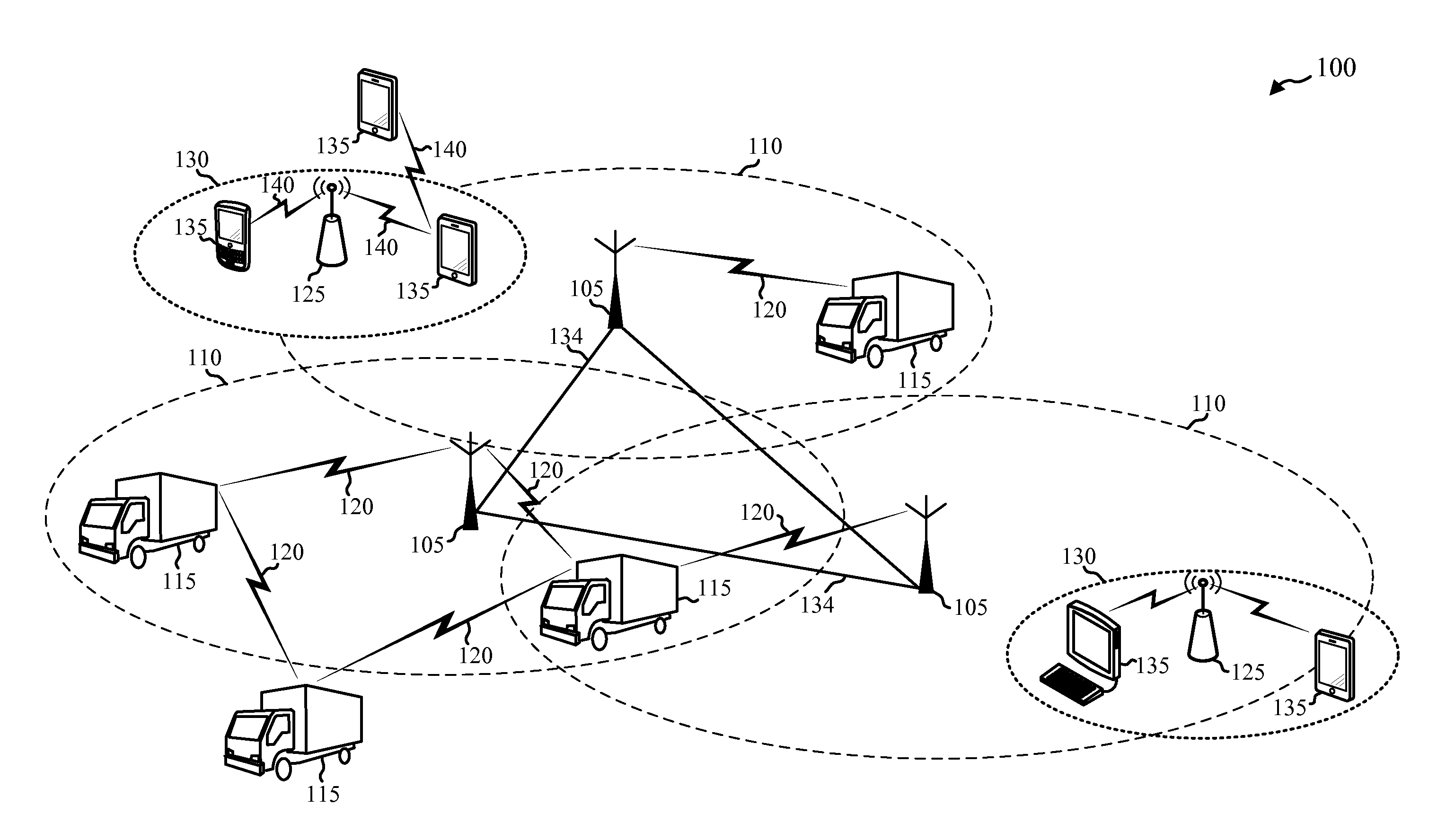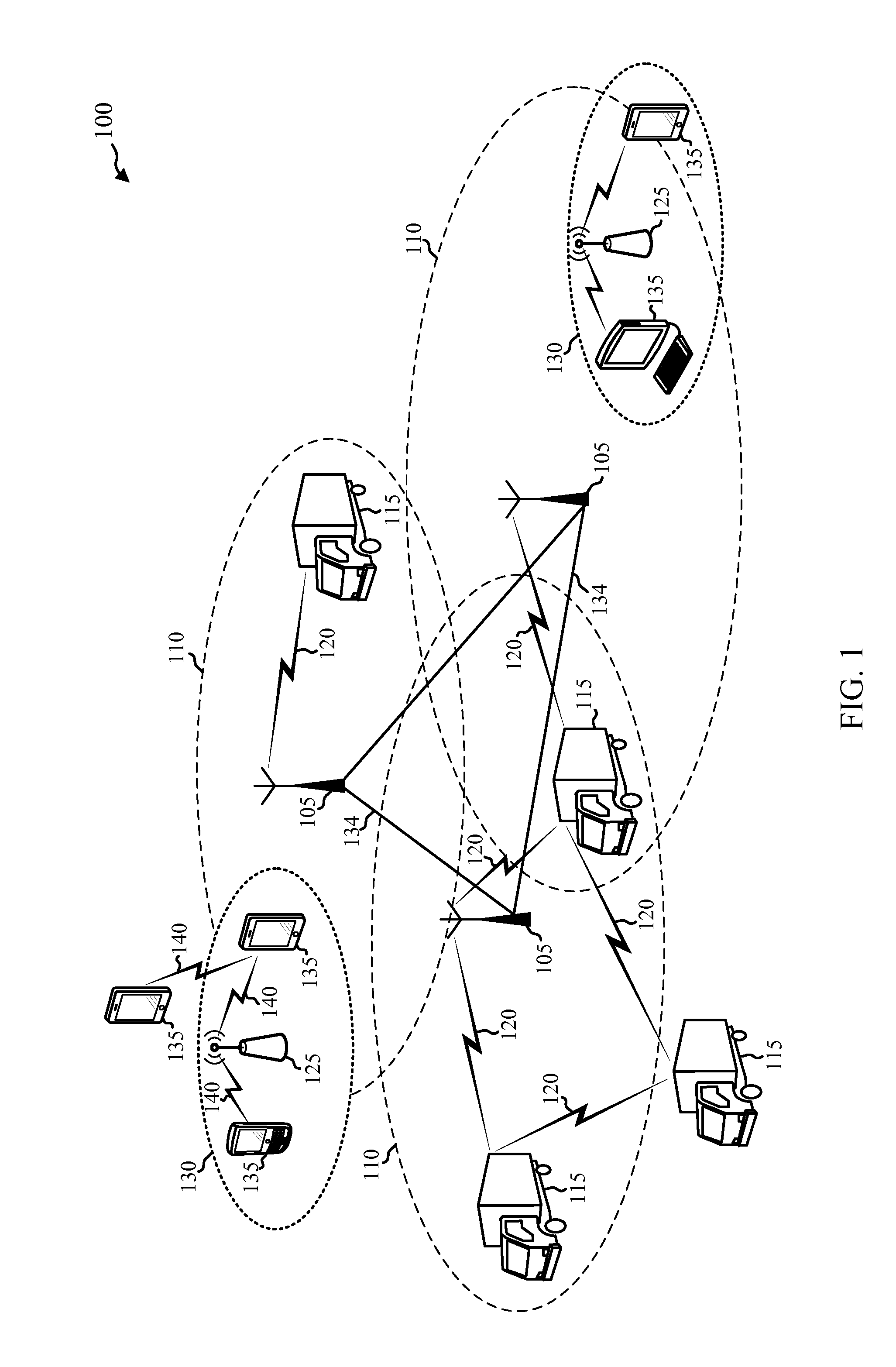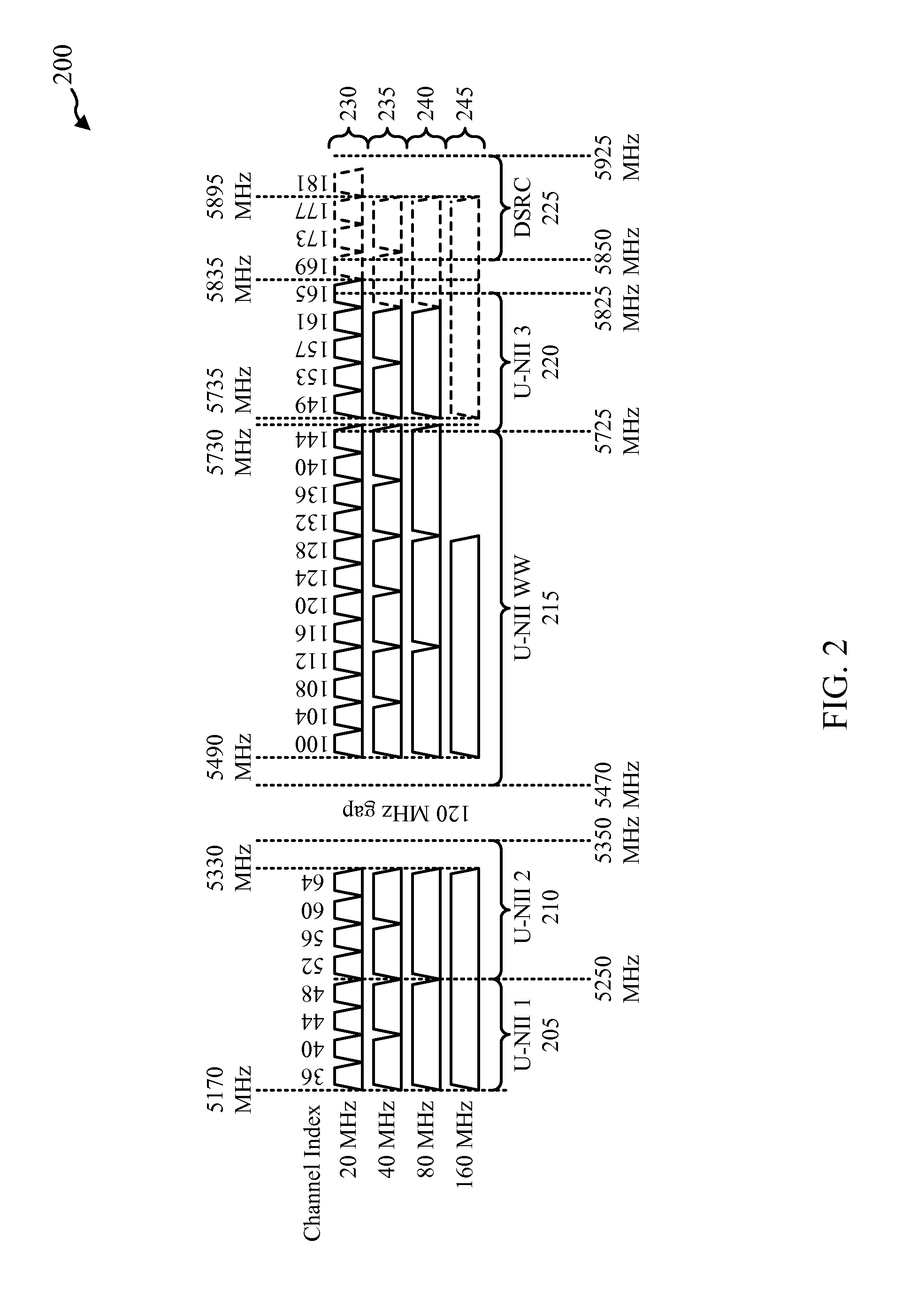Inter-frame spacing adaptation for yielding to dsrc operation
a technology of inter-frame spacing and dsrc operation, applied in the field of wireless communication, can solve problems such as interference with dsrc-related transmissions, and achieve the effect of increasing duration
- Summary
- Abstract
- Description
- Claims
- Application Information
AI Technical Summary
Benefits of technology
Problems solved by technology
Method used
Image
Examples
Embodiment Construction
[0025]Information and data may be transferred more quickly and efficiently based on the amount of available bandwidth. The size of the bandwidth (e.g., the width) may be the difference between the highest frequency and the lowest frequency in a continuous range of frequencies (typically measured in Hertz, for example). Often, the data rate limit (e.g., channel capacity, amount of information that can be transferred) is proportional to the size of the bandwidth. For example, 80 MHz of bandwidth will have a higher data rate limit than 40 MHz of bandwidth. As a result, in order to support higher data rates, more bandwidth may be required. Bandwidth occupies at least a portion of a spectrum (e.g., radio spectrum). As a result, an increase in bandwidth requires an increase in spectrum. However, additional spectrum may be difficult to obtain.
[0026]In most cases, spectrum use is regulated (e.g., allocated). For example, in the United States, spectrum use is regulated by the Federal Communi...
PUM
 Login to View More
Login to View More Abstract
Description
Claims
Application Information
 Login to View More
Login to View More - R&D
- Intellectual Property
- Life Sciences
- Materials
- Tech Scout
- Unparalleled Data Quality
- Higher Quality Content
- 60% Fewer Hallucinations
Browse by: Latest US Patents, China's latest patents, Technical Efficacy Thesaurus, Application Domain, Technology Topic, Popular Technical Reports.
© 2025 PatSnap. All rights reserved.Legal|Privacy policy|Modern Slavery Act Transparency Statement|Sitemap|About US| Contact US: help@patsnap.com



